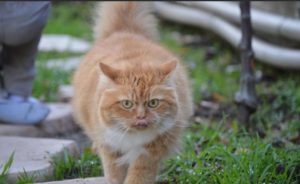The term “food allergy” is often used to describe any adverse food reactions in dogs, often when an owner sees vomiting or diarrhea in the home. However, it is more accurate to describe many adverse food reactions as “food intolerance”. A true allergy means that there is involvement of the dog’s immune system, while food intolerance does not involve the immune system. Adverse food reactions in dogs are often confused with food allergies. One characteristic of food intolerance is that it occurs on the first exposure to that food or food additive. Allergies, and the immune system behind them, generally require several exposures before signs are seen.
There are several general categories of food intolerance reactions that may occur in dogs that are not caused by allergies:
-Food poisoning is a direct adverse reaction caused by food that is a frequent cause of gastrointestinal disease in dogs and may include the ingestion of excessive amounts of a certain nutrient, ingestion of spoiled food, and ingestion of foods that are irritating or toxic to a canine (such as chocolate)
-Food additives are occasionally reported to cause issues, including disulfides. Disulfides are found in onions and can cause damage to your dog’s red blood cells.
-Carbohydrate intolerance in dogs is much less frequent than in people, but does include lactose intolerance. Signs seen at home include diarrhea, bloating, and abdominal discomfort after ingesting any type of dairy product.
-Dietary indiscretion is one of the most common reasons for dogs to develop vomiting and diarrhea, occurring when they eat garbage or human foods. The gastrointestinal signs may result from bacterial contamination, fat or grease (don’t feed your dog fast food!), or from bones, plastic, or aluminum foil.
When your dog’s stomach seems to be an issue, try to distinguish between it being due to something he has eaten once versus something has eaten multiple times (and therefore may involve the immune system and a potential food allergy). Knowing the dog’s feeding schedule, nutrient profile, and the timing and severity of any signs and symptoms will help your veterinarian distinguish between a one-time adverse food reaction and a more chronic food hypersensitivity. If you would like to discuss any concerns about your dog’s diet, please call us at Copper Hill Animal Clinic.

